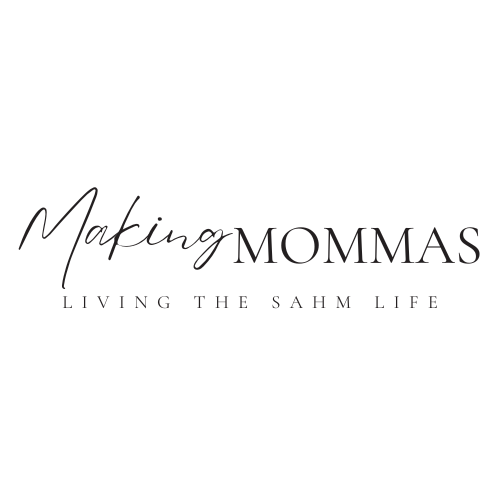In this article:
ToggleSetting goals for your blog is hard. And if you’re reading this post, it’s because you know it’s hard, and you are looking for a little bit of guidance on how to write out your blogging goals in a way that actually works.
Because it’s one thing to have a bunch of goals, and something else entirely to actually meet your goals on a daily, monthly, and yearly basis. Goals are no good if they don’t work for you!
So, how do you create realistic, reachable goals that actually help you to grow your blog? Keep reading! In this post, I’ll show you how to:
- Create goals that actually work for your blog
- Write SMART goals
- Break your yearly goals down into daily to-do tasks
- Stay committed to your goals
Let’s get started!
What to do before setting goals for your blog

Goal setting isn’t a quick and easy process. It actually takes some work. Especially if you want your goals to be right for you! So, the first thing you need to do is schedule some time to do the work!
There are a couple of different ways you can do this:
➢ Set aside an hour or two every morning for a week
➢ Set aside an entire day to pound it out
Whichever route you decide to take, be sure to actually schedule that time into your planner. Make an appointment with yourself! This is important for the growth of your business.
And then, the first thing you are going to do before you ever start creating this year’s goals is to review last year. Or, if you are reading this post in the middle of a year, review the last quarter.
Review your goals from last year

Before you create your goals for your blog, you need to take a look at how last year went. Doing this will help you to see:
- Where you were successful
- Where you fell short
- What your strengths and weaknesses are
- What habits are harming you
- What went well and what didn’t
- What you learned over the year
- How you grew as a person and a blogger
- How your blog grew
Because even if we think we had the most horrid year ever, after reviewing your year in this way, you can generally find something to be grateful for! Something that went well. Even if you didn’t see it while it was happening.
No, especially if you didn’t see it while it was happening.
What to review from last year
Your review can be as in-depth or as brief as you’d like it to be. I recommend in-depth, of course, because the more you know about last year, the more insightful you can be this year when setting your goals.
But, when you are reviewing your year, you want to at least look at these things:
- Your blog statistics
- Your social media profiles
- Your profit and loss statements
- Your blogging habits
- Your successes and failures
When you review your year in this way, it gives you a chance to see your strengths and weaknesses. Do you learn well from your mistakes? Do you correct them and move on? Or do you keep repeating them, year after year, month after month?
Patterns of behavior will begin to emerge, and you can use these patterns to help you set bigger and better blogging goals for this year.
☛ Your turn! Before starting on your goals, take a moment to review last year.
After you review your year, the next step is to decide what your goal for your blog is.
Decide whether you are trying to make money or trying to grow your traffic

Generally speaking, people start blogs so that they can make money. So, there’s a very high probability that your goal for this year is to monetize your blog OR to increase your blogging revenue if you’ve already seen some profit.
But blog monetization isn’t right for everyone.
Not every blog should be immediately monetized.
That’s right. You read that right. Trying to make money off of your blog isn’t the right course – the right goal – for every blogger.
I’ve been blogging for five years now. And I started with the intent of making money. That was my only goal.
I desperately needed to make money off of my blog. So, of course, I didn’t. 🤣 😂 Why?
Because I chased every Tom, Dick, and Harry, promising a brand new, shiny object – THE way to monetize my blog!
I spent countless hours:
- Building a Facebook group
- Posting on EVERY social media channel
- Creating (fun!) opt-ins and freebies
- Creating digital products (that I never ever sold! Ha!)
- Creating challenges
- Designing courses
Oh yeah, and I continuously updated my website, making it prettier.
There was one thing I didn’t spend much time on.
And that was actually blogging.
See, before you can even think about monetizing your blog, you have to have a solid foundation.
You have to actually build your blog before you can monetize it.
Otherwise, it’s like trying to sell a fancy dinner on the sidewalk, while the restaurant is being built right behind you.
Who wants to eat a romantic, candlelit dinner on the sidewalk?!? 😂 🤣 It just doesn’t work.
Are you building a foundation, or working towards monetization?

If you are struggling, year after year after precious year, you could be making the same mistakes I made: trying to make money when you should be focusing on building the foundation.
So, after you complete your yearly review (or quarterly, if you are doing this in the middle of a year), you need to dive deep into your financials.
I know. YUCK. I hear ya.
But there’s a really easy, quite fascinating way to do this! It’s a nifty little exercise that not only helps you see how much money you made last year, and how you actually made it, but it also helps you to set your financial goals this year.
And you can learn all about it right here, in this post: Before Writing Your 2021 Blogging Goals, Do This!
After completing that exercise, you will know if you should be focusing on financial growth or the blogging basics – the foundation to growing your blog.
[Side note: this post does have affiliate links in it. This means that I earn a small commission if you purchase something through the links in this post. I never recommend products I don’t believe in, and it costs you nothing extra. For more information, see my disclosure policy here.]
Ready Set Blog for Traffic can help you build your foundation

And if you need to go back to the blogging basics (no worries! I did too!!) I’ve got a GREAT course to help you build that foundation: Ready Set Blog for Traffic.
Elna Cain’s Ready Set Blog for Traffic will help you to build the strongest foundation for your blog!
She will walk you through:
- what you should be focusing on at each stage
- how to write so that your readers will love you
- how to use Pinterest to grow your traffic
- the basics of SEO
- how to be more productive
Her course is golden. You need to get it if you are serious about monetizing your blog.
First, build your foundation, then focus on monetization.
☛ Your turn! Take a moment and review your financial goals.
How to write goals for your blog

Phew! 😅 That was a lot of prep work! But it’s okay because after going through all of that, you should have a pretty good idea of what your goals should be.
You should either be working on your blog foundation or monetization.
If your ultimate goal is to build a good, solid blog foundation, then you should focus on:
✔︎ consistently publishing high-quality, valuable content
✔︎ traffic growth through Pinterest and another social media platform of your choice
✔︎ using SEO to grow your search engine traffic on Google
✔︎ growing your email list and creating a nurture sequence
✔︎ optimizing your blog by updating the theme, pages, and posts
If your ultimate goal is monetization, then you should be focusing on:
✔︎ creating a monetization strategy
✔︎ offering a service
✔︎ creating a product
✔︎ creating a launch calendar
✔︎ creating sales funnels
✔︎ optimizing your site for sales
✔︎ content marketing on your blog and social media channels
Go ahead and choose two or three of those goals to work on. Stay in your track; monetization or blog foundation, but only choose at most three.
Too many goals can be overwhelming. There will be more years to come, to conquer the rest.
After you have your blogging goals for the year, it’s time to make sure they are SMART goals – and then it’s time to break them down into daily to-do tasks! Because what good is a goal if we don’t know how to make it happen?
The first step to setting goals for your blog is to turn your blog goal into a SMART goal

Okay, we all know what SMART goals are. They’ve been around for a very long time now. But it’s a goal-setting basic that I feel compelled to walk you through. 🤣 So, grab a piece of paper and a pencil, and let’s get started!
Step #1 to SMART blogging goals: write down your goal
Pretty self-explanatory, right?
Let’s just take your first goal and write it down. Now we’re going to take that goal and make it SMART – specific, measurable, achievable, relevant, and timely. And I’ll walk you through it by using an example.
Example goal: I want to grow my blog traffic in 2022.
So, our first step to making this a SMART goal is to be more specific.
Step #2 to SMART blogging goals: be more specific

Knowing that you want to grow your traffic in 2022 is great. But it doesn’t leave much direction, does it?
How are you going to grow your blog traffic?
To figure this out, you need to ask yourself a few questions:
1. Who: who is going to do the work to grow your traffic?
Just you? Or do you have a team? If you have a team, who is going to tackle what?
2. What: what traffic are you going to grow?
Traffic to your posts? Traffic on Pinterest? Sales page traffic? Social media traffic? Be very specific about what kind of traffic growth you are looking for.
3. When: when will you grow this traffic?
Do you plan on tackling this all year long? Or just for a month or two? What is your timeline for getting this goal accomplished?
4. Where: where is this traffic coming from?
Again, where are you focusing on that traffic growth? Where do you need to put your attention? Will it be social media, SEO, or both?
5. Why: why is traffic growth your goal?
This is such an oh, so very important question to ask yourself. Why is this goal so important to you? Hopefully, you did your prep work; reviewed your year and your financial goals, so that you know exactly why this goal is so important.
6. How: how will you grow your traffic?
What will be your plan of action? What do you need to focus on to see this growth?
So, let’s walk through this using the example.
An example of a specific goal
- Who: let’s say you are a solopreneur. So, it’s all on you baby!
- What: You are going to grow your website traffic; specifically, to your blog posts. You want to increase the number of visitors coming to your posts. And not just the new visitors but returning visitors. You want to increase your returning visitors and your new visitors to your blog posts.
- When: You plan on working towards this goal all year long.
- Where: where is this traffic coming from? Your social media channels. You want to focus on Pinterest and Facebook. You will worry about SEO next year.
- Why: why is traffic growth your goal? Because you eventually want to monetize your blog. And you realize that building a loyal readership is the first step toward monetization.
- How: you will grow your traffic by consistently publishing high quality, valuable content on your blog. And then you will focus on promoting that content on both Pinterest and Facebook.
So, now our goal used to look like this: I want to grow my blog traffic in 2022.
But instead, we now have an example goal of:
I will grow my blog traffic by increasing both, the new visitors and returning visitors to my site through consistent, valuable content for my readers and by promoting that content on both Pinterest and Facebook.
That’s a better goal than the first, but we aren’t done yet!
Step #3 to SMART blogging goals: making your goal measurable

You have a great goal, for sure. But now the question is, how much traffic? How many new visitors? How many returning visitors?
What portion of traffic do you want to be new and what is returning? Do you want 70% returning visitors and 30% new visitors?
And how often will you measure your visitors? Monthly? Quarterly? Or are you working with a yearly total?
How long will you give yourself to tackle this goal? The entire year? Or just six months?
How will you know when you are successful?
A measurable goal might look like this:
I will increase my blog traffic for 2022 by 25%, with 30% of that traffic being new visitors and 70% being returning visitors to my blog every month. I will do this by publishing consistent, valuable content and by promoting that content on both, Pinterest and Facebook.
Step #4 to SMART blogging goals: is it achievable?

Is your goal doable? In using the example above, can you really increase your traffic by 25%? How many more visitors per month would that be for you? And is 70% returning visitors realistic? If right now you only have 7% of your visitors returning, then 70% might seem like a stretch.
Some good questions to ask yourself are:
- Do I have the resources and skills to achieve this goal? If not, what do I need?
- Have others successfully met this goal?
Rewrite your goal based on these questions. In the above example, we may have decided that 70% returning visitors is not achievable, so we could rewrite it as follows:
I will increase my blog traffic for 2022 by 25%, with 70% of that traffic being new visitors and 30% being returning visitors to my blog every month. I will do this by publishing consistent, valuable content and by promoting that content on both, Pinterest and Facebook.
Step #5 to SMART blogging goals: is it relevant?

If your goal is achievable, your next step is to make sure it’s relevant to your overall goal. So, in our case, we want to grow our traffic, and we want to do this because we want to eventually monetize our blog. Right?
Will growing our traffic help us to monetize our blog? Can we monetize our blog without growing our traffic? Is it necessary to first grow our traffic?
Well, that depends on who you ask. 🤣 😂
Many people will tell you that you don’t need a lot of traffic to make a sale. And just as many more people will tell you that you do.
So, who do you believe?
Your own history.
If you did the prep work and reviewed your past year before setting your goal, then you will already have this question answered. Because you’ll have created this goal out of a place of necessity. And not just as a whim.
But, if you are still stuck, ask yourself these questions:
- Is growing my traffic worth my while?
- Is now the right time to be focusing on traffic growth?
- Does this goal jive with my other two goals? In other words, do they complement each other and help push me towards monetizing my blog?
- Is this goal applicable to the current state of my blog?
That last question is important. What if you are trying to grow traffic and you already have a huge following? Then is working towards traffic growth really the right priority?
Or, what if you are doing like I was, and trying to monetize a blog that had little to no readers? Then is monetization the right goal for you at this time? Or should it be traffic growth?
Step #6 to SMART blogging goals: make it timely

So far, our goal should be specific, measurable, achievable, and relevant. Now, we need to make sure it’s time-bound. We can’t create a goal and not give ourselves an end date!
We’ll never get it done then!
So, we need to create a start and end date for our goal. If you are reading this post at the beginning of 2022, then the start date would be NOW! LOL. And the end date would be December 31, 2022, for the goal we are using as an example.
Without a time restraint, we have no sense of urgency; no reason to work hard towards our goal.
So, ask yourself:
- Does my goal have a deadline?
- When do I want to achieve this?
Phew! 😅 That was a lot of work!
Our new SMART goal might look like this:
I will increase my blog traffic for 2022 by 25% every month, with 70% of that traffic being new visitors and 30% being returning visitors. I will do this by publishing consistent, valuable content and by promoting that content on both, Pinterest and Facebook.
Specific = new visitors & returning visitors, through promotion on Pinterest, Facebook, and consistent publishing
Measurable = 25%, 70%, 30%, measuring my progress every month, and knowing I’m successful when I’ve increased it consistently every month
Achievable = I have all the tools and resources I need to do this
Relevant = this goal is going to help me to later monetize my blog because I will have a good foundation and a loyal following
Timely: I will do this by December 31, 2021
And there you have it! SMART blogging goals in a nutshell!
☛ Now it’s your turn! Get to work on your SMART goal – just do one for now. And then come on back here and learn how to break that goal down into a daily task!!
The second step to setting goals for your blog is to break your SMART goal into quarterly goals

Alright! We have a SMART goal of growing our traffic, right? And we are going to do that by publishing consistent, valuable content on our blog, and by promoting our blog post on Facebook and Pinterest.
Bingo!
There’s our action plan.
Kind of.
Aren’t SMART goals wonderful? They make it so much easier to break our goals down into quarterly goals. Because now we know how we are going to grow our traffic:
- by publishing consistent, high-quality, valuable blog posts
- by promoting that content on Facebook
- by promoting that content on Pinterest
If we were to break our goal down into four smaller quarterly goals, we’d already have three right there. Easy peasy!
But we still need one more…what’s one other task or goal we could have, that would increase our traffic?
⇢ we could focus on SEO
⇢ we could focus on one more social platform
⇢ we could use ads
⇢ we could update old blog posts
For this example, I’m going to use number four, updating old blog posts.
We want to take our yearly goal and break it down into quarterly goals, assigning each quarter its own focus. So, here’s how our example goal would play out:
An example of quarterly goals
🌟 Quarter One – January through March: focus on publishing consistent, high-quality, valuable blog posts
🌟 Quarter Two – April through June: focus on the Pinterest profile for promotion
🌟 Quarter Three – July through September: focus on the Facebook platform for promotion
🌟 Quarter Four – October through December: focus on updating old blog posts
Now, in quarters two through four, we will still be focusing on creating consistent content, of course. It’s just that we will also add to it by optimizing our Pinterest profile, learning all about Pinterest, and consistently promoting our content on Pinterest.
In quarter three, we will still publish consistent content and promote on Pinterest, but we will also add Facebook to our arsenal. And in the fourth quarter, we will do all three of those things, but also start updating old blog posts.
Capice?
☛ Your turn! Take your SMART blogging goal for 2022 and turn it into four quarterly goals.
The third step to setting goals for your blog is to break your quarterly goals out into monthly goals

Basically, we are going to repeat what we did up above for our yearly goal, but for a quarterly goal instead.
So, let’s take the first quarterly goal in our example: publishing consistent, high-quality, valuable content for our readers.
We need to break this down into three monthly objectives, goals, or tasks. Whatever word you like. There are three things we need to do to make this goal happen. What are they?
For our example, I’m going to say that they are:
- Create a content strategy and an editorial calendar
- Create a process or system for getting consistent content up on the blog
- Implement the system by publishing consistent, high quality content twice a week
So, our monthly goals might look something like this:
January: Create a content strategy and an editorial calendar
February: Create a publishing process
March: Implementation
If we are no stranger to blogging, then these things might be pretty quick and easy for us. But, if we are rather new, or have never performed one of these tasks before, then they might be a bit more complicated.
If it’s easy, you’ll breeze through them and can really just focus on publishing consistently. If it’s not easy, you might actually need to spend a month learning what a content strategy is, how to use it, and then create your own.
The hardest part, for nearly all bloggers, is creating a system or process for publishing consistently. So you might actually spend the whole quarter working through that.
Hint: if this is you, Elna’s Ready Set Blog for Traffic course shares how she does it – and it works! I’ve tried it. ☺️
☛ Your turn! Take your first quarterly goal and break it down into three monthly objectives.
The fourth step in setting goals for your blog is to break your monthly goals down into weekly objectives

Are you starting to see a pattern here? We just keep breaking it all down.
So, let’s grab our January goal in our example, of creating a content strategy and editorial calendar, and break that down into four weekly objectives. And for the sake of argument, let’s say we have no idea how to create a content strategy.
What are some things we would then need to do, in order to create this strategy?
Maybe learn what a content strategy is? And how to create one? And then maybe we would want to create our own?
And we also need to learn about editorial calendars and create our own.
So, our weekly objectives could look like this:
Week One: Learn about content strategies
Week Two: Learn about editorial calendars
Week Three: Create our content strategy
Week Four: Create our editorial calendar
So, it’s pretty easy really. Just take your monthly goal and think of four things you need to do, four steps you need to take, to make it happen. And then break those down into weekly objectives.
☛ Your turn! Break your first monthly goal down into four weekly objectives.
The final step in setting goals for your blog is to break your weekly objectives down into daily tasks

Right?!? What else could it be?!? 😂🤣
So, take your first week and break that down into five to seven daily to-do’s. These will be your daily tasks! Then in week two, you break that objective down into five to seven daily to-do’s, the same with week three, and so on and so forth.
So, in our example, our week one objective was to learn about content strategies. So, in order to do that, what are some things we need to do? Or could do?
- Research content strategies online
- Ask around to see what other people know
- Watch YouTube videos or Facebook lives
- Join face book groups about content strategies
- Read books on the subject
- Enroll in a course or program about creating content strategies
There are so many different ways to learn!
For the purposes of our example, let’s say we decided to simply enroll in a course and learn. Our daily tasks could look like this:
Monday: research courses to buy and choose one. Purchase it.
Tuesday: go through the entire course quickly, without actually taking action
Wednesday: work through lessons 1-3
Thursday: work through lessons 4-6
Friday: work through lessons 7-9
Easy breezy lemon squeezy right??
☛ Your turn! Take your first weekly goal and break it down into five to seven daily to-do’s.
And that’s it! That’s how you break your blogging goal down into daily tasks!
Setting goals for your blog: a quick review

Okay, let’s just run through this one more time for you, quick as a bunny:
Step #1: Review last year, including your finances
Step #2: Create your SMART goal
Step #3: Break your SMART goal down into quarterly goals
Step #4: Break your quarterly goals down into monthly goals
Step #5: Break your monthly goals down into weekly goals
Step #6: Break those weekly goals down into daily tasks
I’d recommend only working through the first quarter. You can create your quarterly goals and your monthly goals for the entire year, but I would not create your weekly goals for each month, for the entire year. That’s too much work and working way too far in advance.
Things change so much in the online world! You don’t want to put that much work into it, only to find yourself pivoting halfway through the year.
Just do it a week at a time after you have your monthly goals established.
And if at any point you need help during this, just post a question in the comments below! I’m happy to help.
Tools for writing out your goals

I would be doing you a disservice if I didn’t share my favorite tools for planning out my blogging goals, now wouldn’t I? 😁 These are my favorites.
1. Lux Productivity Planner


If you’ve been following me for a while now, then you know that I love this planner. I bought it in 2019, after a considerable amount of research.
This planner has a section to write out your long-term goals, with start and finish dates. This is where I put in my big three goals for the year.
The nice thing is that the main goal is then broken down into what the Lux calls ‘milestones’. I call those my quarterly goals. But it’s nice to have them listed right there, under the main goal.
It has the start and end date by each milestone, so you can add your start and end date for each task in your quarterly goal. But it doesn’t flow perfectly with my system for breaking goals down, so I used the Passion Planner as well, especially for the weekly section.
Its daily section is great though! I love it! What I like about it:
- You list your critical tasks first. These are whatever is pressing during the day.
- At the bottom is a section for your progress goals. This is where I list out the daily tasks that I’ve broken down using the process up above.
- It has a section for all of the other, not as important tasks.
- It lists out today’s wins. I love this because it is a great way to recognize what you did get accomplished during the day. Often as bloggers, our to-do list is longer than we could ever reasonably accomplish. This helps me to be grateful for what I did get done.
- It has a place to log exercise! Love that!
It also logs water and has an open spot for the day’s appointments. I’m a blogger; my appointments are very few and far between. 😂 🤣 I often find myself using it for notes.
At the end of the week is a weekly review. It’s okay. I sometimes use it and sometimes don’t, depending on how I feel. I’m actually not very good about reviewing my week.
What do like about it though, is it has a habit tracker at the bottom of the weekly review. And since I’m trying to post consistently on Pinterest and on my blog, that is helpful to me.
2. Passion Planner


If you can’t invest in the Lux right now, I’d highly suggest you download the Passion Planner. They have a free planner you can download and print out. This is how I started until I was able to invest in the Lux.
The Passion Planner and the Lux are so very similar! I used the Passion Planner for quite a while. The only reason I switched was because the way it was designed was not the way my brain worked. 😂 🤣
It uses brain maps and more abstract ways of looking at things, and I’m pretty cut and dry. I like lists.
But it really does the same thing as the Lux. I like the daily format of the Lux better, but I hate the Lux’s monthly calendar and it doesn’t have an end of the month review. So, I print out the Passion Planner’s calendar and monthly review every month and add it to my Lux. I also use the Passion Planner’s weekly calendar because the Lux is missing that.
It also has a great yearly review.
But if the Passion Planner is more your thing, you can grab an actual bound book. You don’t have to use the free printables.
3. Goal Slayer Planner

I actually haven’t used the Goal Slayer Planner for a couple of years now. But, when I first started out blogging, this was my go-to planner.
The reason why is because it is an in-depth goal-setting planner. As you can imagine, by the name of it. 😁
I liked it because it helped me figure out:
- If blogging was right for me
- How blogging would affect my life
- What goals I should set for my blog
- Why these goals were important
I had some MAJOR soul searching to do at the beginning of my blogging career, and this planner helped me sort it all out.
My mind doesn’t quite work in the way the planner was laid out though, so I moved on. I needed fewer maps and visuals and more lists. 😁
4. Bullet journaling
I used the Lux and the Passion Planner religiously, but I also needed a place for all of my blog-specific plans and tasks, along with my freelancing stuff. I couldn’t find a planner that had everything I needed, so I started bullet journaling instead. And now I’m hooked!
I wish I had a post up about how I use bullet journaling, but I don’t. 🤷🏻♀️ It’s on my to-do list. 🤣 😂 But if you are interested, you can browse bullet journal supplies on Amazon.
5. The Making Mommas Daily Blog Planner
I LOVED bullet journaling. But I didn’t like creating my pages every.single.day. So, I hopped on Canva and created them – once! 😁 And then put them in my Lux 6-ring binder. Beautiful, Clark! I absolutely love them.
So, I added it to my printables shop for you – and created it in Light Grey and Adriatic Mist as well. I use Bravo Blue.
Check them out and choose the color that works for you!
And be sure to browse all of my planner inserts as well, for a fully customizable blog planner.
Bonus tips for setting goals for your blog

I’m kind of a planning nerd. I LOVE setting and planning goals. So, I thought I’d share a few things I’ve learned over the years, to keep in mind while you are setting your goals.
1. Chose only three to four goals to focus on every year
You want your year to be successful. If you plan out tons of goals, there’s no way you’ll reach them all. And then you will just feel overwhelmed and like a failure at the end of the year.
Just choose three or four. Chose the three that will have the biggest impact on your year. Don’t worry. There are more years for the other goals.
2. Put your daily task at the top of your daily to-do list
When you break your goals down into daily to-do’s, make that task a priority by putting it at the top of your daily to-do list and tackling it first. It is the ONE THING that will propel you towards your goal! Nothing else will have as big of an impact on your blog as that one task, so do it first.
3. Set goals that motivate you
Reaching for our goals is hard work. It is so easy to give up along the way. Don’t set a goal because you think it is the right thing to do, or because someone else said you should do it.
Set goals that motivate you. They feed your passions and fuel your fires. And when you set your goals, know why you are setting them!
Knowing how your goal will impact your life – and the lives of others – will keep you motivated and pushing on when times get tough. If your goal isn’t important to you; if it’s not going to make an impact on your life, then you won’t stick with it.
4. Stay focused on your goals
Easier said than done! In the online world, there is a lot of noise. And everyone is shouting at you and trying to grab your attention. They want you to do things the way that worked for them.
But remember, they are trying to sell you something. Everyone is trying to sell you something. So, put your head down and stay focused on your goal!
Ignore them and their way of doing things. You can try it out another day. Today, you are busy working on what you know will move your blog forward!
5. Create systems for meeting your goals
Odd tip, I know. But if your goal is to publish consistently, then create a system or a process for getting it done.
Falling into a daily habit or routine will make meeting your goal so much easier, especially if you have to do something the same every single day, like publishing on social media. Creating a process for getting this done will help you put it on auto-pilot.
6. Regularly review your goals
Do not leave this step out!! It can be the difference between making and breaking your goals! Regularly and consistently review your goals and your progress!! Some key times to review include:
- Review your daily progress at the end of each day
- Check your weekly progress at the end of each week
- Review each month
- Review each quarter
- Perform a final review at the end of each year
At the end of the day…

Setting goals for your blog takes time. So, block out some time this week to write down your blogging goals! Either get it all done in one intense day or block out some time each morning.
And then follow this process:
- Start by reviewing last year
- Create three SMART goals based on that review
- Break those goals down, into quarterly and monthly mini-goals
- Break those monthly goals down into weekly goals
- Break the weekly goals down into daily tasks
- Find the right planner to help you do all of this
And that’s it! You should be set up for blogging success in 2023!! After you get it all done, drop a line below and list your number one blogging goal for 2023! Mine is to get 40 printables, eight short ebooks, and (possibly) one course up on my blog (and on Etsy) by December 31, 2022, so that I have products to offer. What’s yours?


